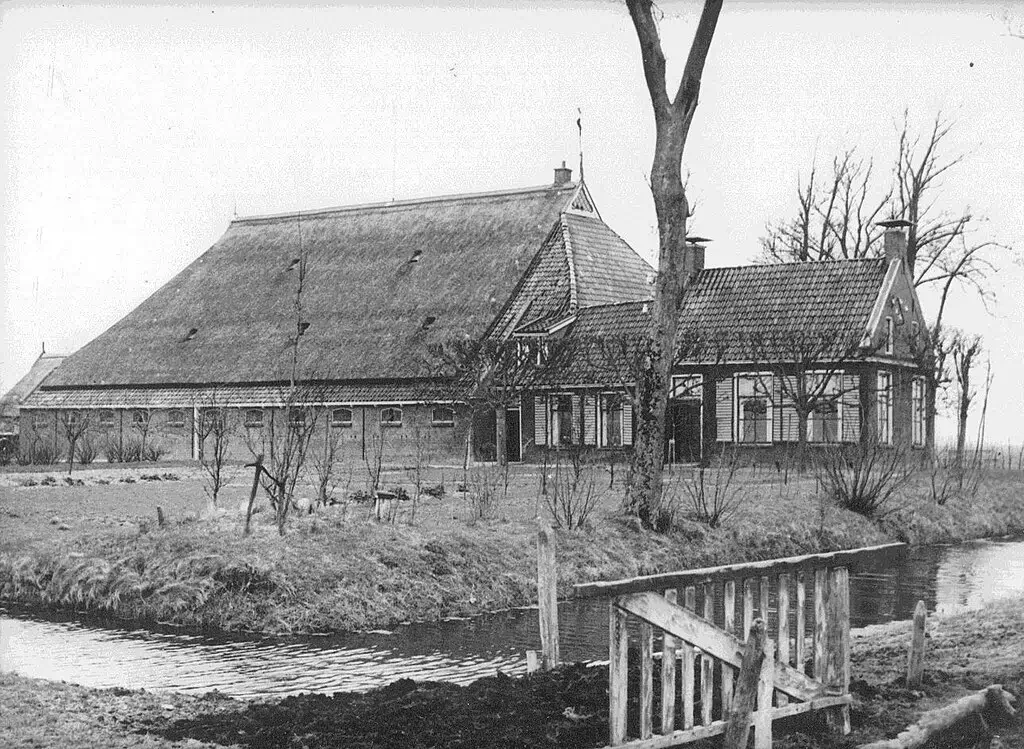The farm
The farmhouse plays an important role in both “Good Girl”, “Bad Girl” and a minor role in “Ugly Girl” as well. This, of course, is not the house in the book, but it comes close to how I imagined it. In the Dutch countryside, you will find lots of farms like this one. In Dutch we call this type of homestead a “kop-hals-rompboerderij”. It is a traditional Dutch farm type known as a “head-neck-trunk farm” in English. It is named for its distinctive structure: the “head” (kop) is the residential section, the “neck” (hals) is a connecting corridor, and the “trunk” (romp) is the main barn for livestock or storage. This design allowed the farmer’s family to live separately from the animals while maintaining an efficient workflow.

Location
Imagine a small, tranquil village named Eikenhof, nestled in the northeastern part of the Netherlands, in the province of Drenthe, which is known for its lush green fields, ancient forests, and gentle rolling landscapes. The Netherlands is a small, flat country in Western Europe, bordered by Germany to the east, Belgium to the south, and the North Sea to the north and west. Drenthe is a rural province with a rich history, famous for its prehistoric dolmens (stone burial monuments).
Eikenhof lies just 10 kilometres south of Westerbork, a town known for the historic Westerbork transit camp from World War II. It is a small village with around 800 residents, most of whom live in charming thatched-roof farmhouses, many of which are centuries old. A mosaic of farmland, heathlands, and dense forests, perfect for hiking and cycling, surrounds the village. Small, winding roads connect Eikenhof to neighbouring villages, while ancient oaks line the village streets.
From Eikenhof, it is about 160 kilometres (approximately two hours by car) to Amsterdam, the bustling capital of the Netherlands, known for its canals, museums, and vibrant cultural scene. The nearest larger town is Assen, the capital of Drenthe, located 30 kilometres to the north, offering more extensive shopping, healthcare, and educational facilities. Despite its rural setting, Eikenhof is well-connected by regional roads, making it a peaceful yet accessible place to live.
Local life in Eikenhof revolves around a small village square with a historic church, a cosy cafe, a primary school, and a community centre where villagers gather for events. The surrounding landscape is dotted with grazing cows, blooming wildflowers in the spring, and golden fields of grain in the summer. The nearby Dwingelderveld National Park, one of the largest wet heathlands in Europe, offers residents and visitors a breathtaking natural escape.
Eikenhof’s charm lies in its tranquillity, natural beauty, and strong sense of community, making it an idyllic example of rural Dutch life.
Westerbork is a small well known city because of it's horrible history
The Westerbork transit camp was a World War II transit camp in the northeastern Netherlands, used by the Nazi regime to imprison and deport Jews, Roma, and Sinti to extermination camps in Eastern Europe, such as Auschwitz and Sobibor. Established in 1939 as a refugee camp for Jews fleeing Nazi Germany, the Nazis transformed it in 1942 into a deportation hub. The Nazis detained over 100,000 people here, including notable individuals like Anne Frank and her family.
The camp comprised barracks, a watchtower, and rail tracks that led directly to the trains used for deportations. Dutch citizens know Westerbork as a symbol of the Holocaust in their country, a place where neighbours and fellow citizens were sent to their deaths. The name Westerbork is deeply ingrained in the national consciousness as a reminder of the horrors of the Nazi occupation and the suffering of the Dutch Jewish community.
After the war, the site became a memorial, with a museum and a haunting monument of broken railroad tracks symbolising the interrupted lives of the victims. The preserved watchtower and reconstructed barracks offer a stark reminder of the suffering endured here. Thousands visit Westerbork each year, including school groups, to learn about this dark chapter of Dutch history. It serves as a place of reflection and remembrance, ensuring that the horrors of the Holocaust are never forgotten.

